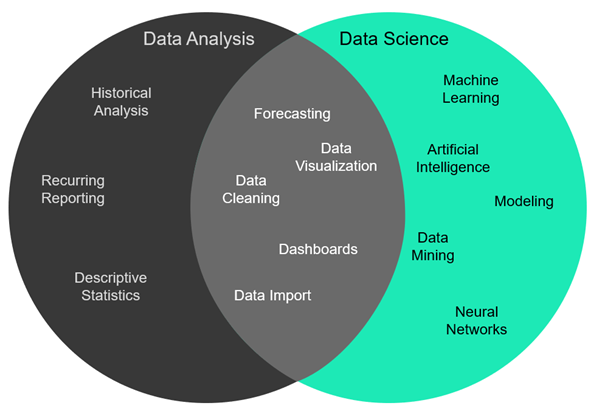Carbon Accounting Management Platform Benchmark…

Organizations are increasingly seeking a competitive advantage by utilizing data to find efficiencies and improve processes. Consider the differences between a data analyst and data scientist and how to hire the right one for your organization.
Data analysis is the process of drawing insights from data. On its own, data can be messy, complex, and overwhelming. A data analyst will take that dataset and provide meaningful, actionable insights to the business. If you’re used to asking, “How many sales did we have on Tuesday?” a data analyst will help provide context and value. How does Tuesday compare to other days of the week? Are Tuesday’s sales lower or higher than other Tuesdays? What else changed that might have affected Tuesday’s sales?
These sorts of insights can be drawn on an ad-hoc basis, but to be most effective, data analysis requires a frequently updating archive of data since studying data from last year won’t tell you the trends of your business today. As such, data analysis also includes the initial steps of intaking data and validating it; and the ongoing steps of making the data and metrics available to decision-makers in the organization.
A data analyst can be expected to create data intake processes, write and automate data validation scripts, query data on-demand, convert business needs into metrics, and create reporting, dashboards, and data visualizations.
As with any role, relevant project experience is the most informative element of a candidate’s profile. While transferable work experience is most desirable, one should also look for relevant coursework, class projects, or personal work that might qualify someone for the role.
Technical qualifications to look for include:
To assess behavioral qualifications, one might consider:
The data analyst position can be a great entry-level role for hiring into the company. Recent graduates can be effective contributors to a team, but will usually require direction and oversight from a more experienced analyst. Data analysts can grow over time to serve as data scientists, software developers, product owners, and quality assurance engineers, all depending on their role, the organization, and the employee themselves.
Data science seeks to predict or prescribe behavior based on large, frequently updating sets of data. At its core, data science seeks to draw more powerful insights from data and utilizes tools and techniques that can accommodate greater uncertainty or datasets too large for humans to reasonably understand.
To illustrate, a grocery store may have thousands of data points about each of its customers. Demographic data like age, address, and family size can be fairly simple to analyze. But once all the variables of shopping data are introduced, things quickly become complicated. Each customer’s visit - what time and how often they come in - and even their whole shopping list is open for analysis. Consider a father with two sons in high school who buys power bars every Sunday night - should the store send him a coupon for a 24-pack of sports drink? Scaling this sort of analysis across thousands of customers, thousands of grocery items, and performing it on an ongoing basis with constantly updating data is too much for even a team of analysts.
A data scientist can use statistics and algorithms to comb through all this data, create inferences for gaps in the dataset, and create a model to simulate shopper behavior. This model is consistently tested and updated as new data is received. While data analysis seeks to answer specific questions to inform business decisions, data science identifies trends and patterns to come up with questions that you may not have realized needed answering.
A data scientist requires a strong background in data analysis, statistics, and programming. Most candidates have a Masters, a Ph.D., or a rigorous set of certifications; data scientists holding solely a Bachelor's degree are exceedingly rare.
Technical qualifications to look for include:
Even more than a data analyst, a data scientist’s ability to communicate complex technical work to others in the organization is essential. Data science algorithms are complicated and need to be properly informed by the business or industry - if the model’s assumptions are wrong, the output won’t be reliable. A data scientist must be able to both listen and explain with equal competence.
There can be a large area of overlap between a data analyst and a data scientist. Most data scientists have the skills of data analysts, and many data analysts study to grow their data science skills. The key lies in finding the best role for your project. Just as one wouldn’t hire a construction foreman to lay bricks, one wouldn’t hire a data scientist to create charts for the monthly executive presentation. Depending on the scale of your project, you may be best served by having a team composed of both roles.

Figure 1. No two candidates will have the same skillsets, so target the job description to the needs of the project. Only hire a data scientist if you need something a skilled data analyst can’t do.
Consider utilizing a data analyst to:
Consider utilizing a data scientist to:
Data analysis and data science are complex fields with substantial overlap. Start by evaluating your end goal – what functionality or insight do you want to provide for your organization? Next, consider your organization’s current level of data maturity and outline steps you will need to follow to meet your goal. Lastly, consider what skillsets will be needed to accomplish those steps and hire accordingly.